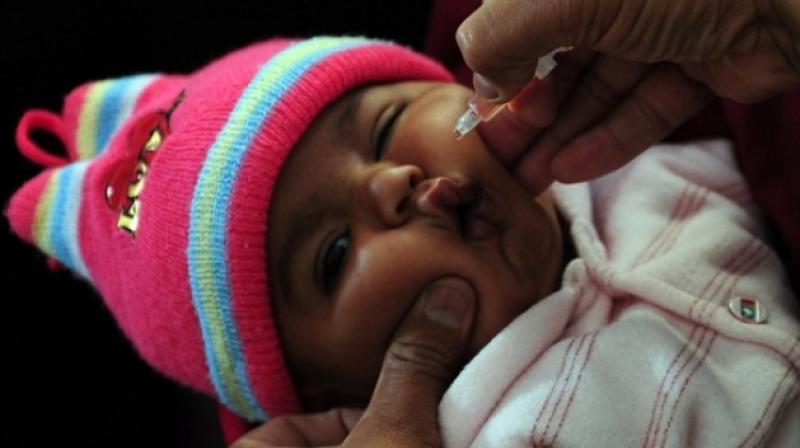Polio vaccine makers failing to make enough doses: WHO experts

Two companies making vaccines to help the world eradicate polio are failing to produce enough, so many countries should prepare to give lower doses to make stocks last, a group of experts has advised the World Health Organization.
With polio on the brink of eradication globally, the WHO wants to see a worldwide switch from the traditional "live" oral polio vaccine, which runs the risk of spreading the disease, to an inactivated vaccine that needs to be injected.
But WHO's Strategic Advisory Group of Experts (SAGE), which meets twice a year, said a severe shortage of inactivated vaccine means many countries should use a fractional dose, via an intra-dermal rather than intra-muscular injection, allowing each dose to go twice as far.
"There are only two manufacturers of the vaccine and they are having some problems with production of the vaccine, and getting enough raw material of the polio virus," SAGE Chairman Jon Abramson told reporters on a conference call on Friday.
Polio is a contagious viral disease which invades the nervous system and can cause irreversible paralysis within hours. "Each time we hear that there's a further reduction in the amount that can be anticipated, we have to make further adjustments," Abramson said. "My hope is this problem can be solved by 2018. But I can't promise that, obviously. It's not something we can control."
The two manufacturers are French drugmaker Sanofi Pasteur and Asia's largest vaccine maker, Serum Institute of India Ltd, owned by the billionaire Cyrus Poonawalla.
Contacted by Reuters, a spokesman for Sanofi Pasteur said the company was on track to meet its commitments as part of its 2016-2017 delivery plan and should be able to supply more doses in 2018. No comment was available on Friday evening from Serum Institute of India.
WHO polio spokeswoman Sona Bari told Reuters that production was about 40 percent below what had been requested, leaving about 50 countries without adequate supplies.
The economic savings of the polio program, between 1988 and whenever the disease is eradicated, were estimated at $50 billion, she said.

